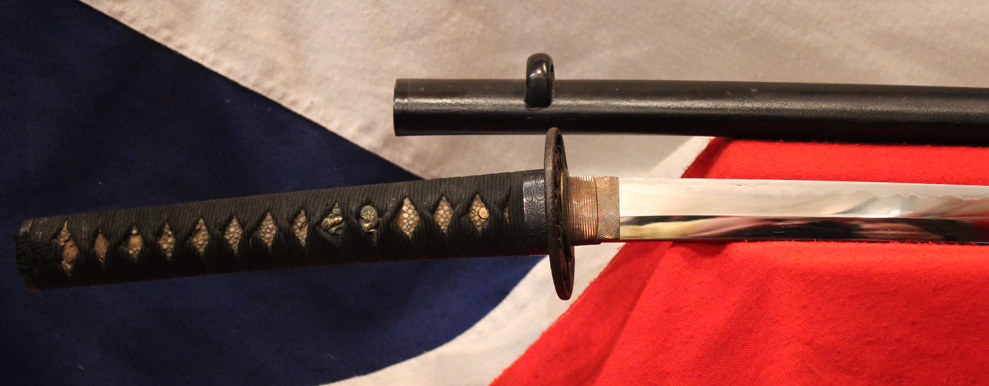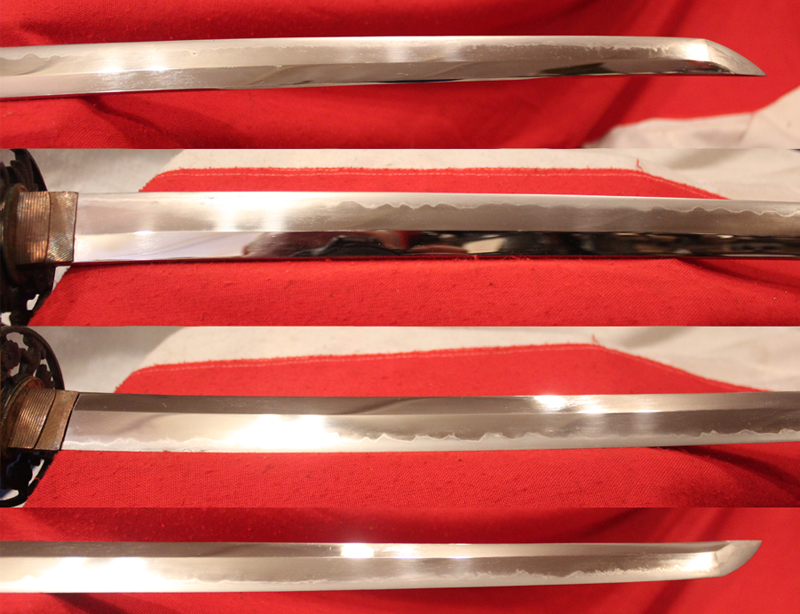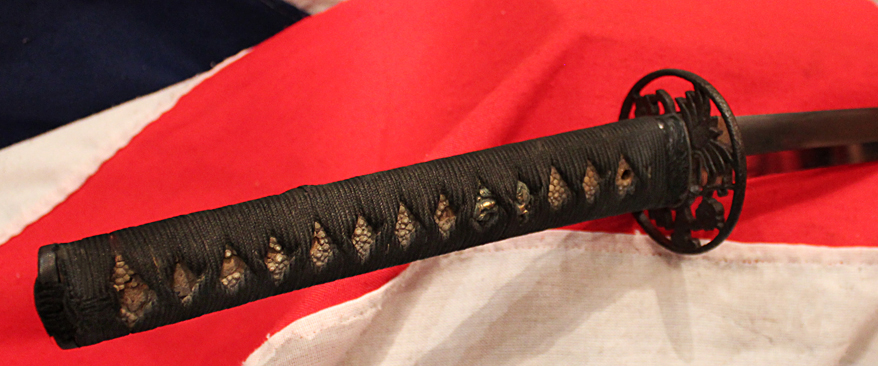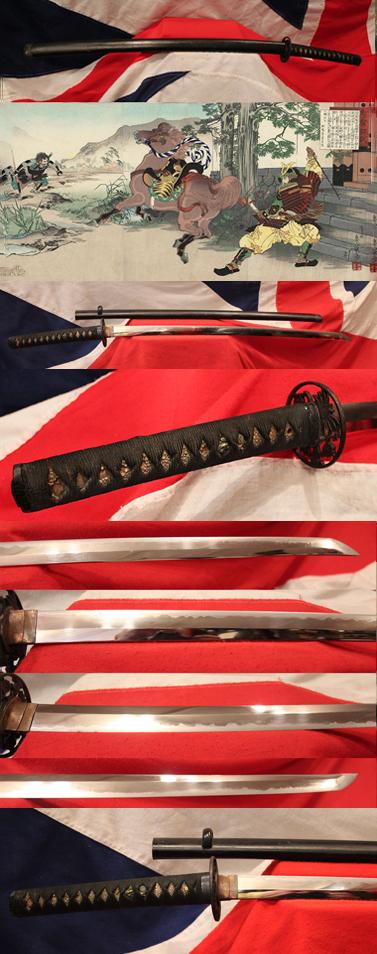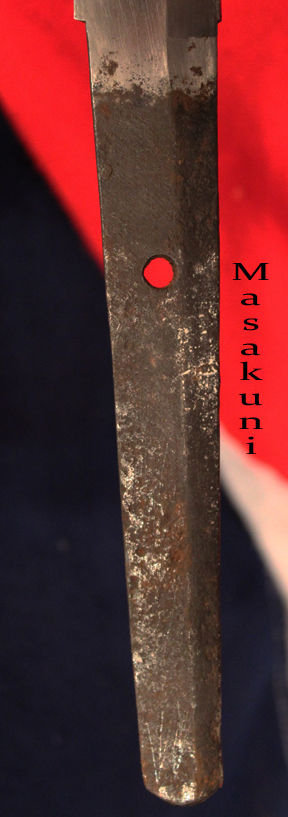A VERY, VERY, SPECIAL DISCOUNT OFFER.. Several People Were Too Late For Our Valentines Day Offer So By Popular Request We Are Choosing A One-Off, BELOW HALF PRICE Samurai Sword !!! A Simply Wonderful Koto Era, Shibui Battle-Sword Katana, Signed Masakuni
An amazing five hundred years old, from the Sengoku-jidai era, with all original Edo fittings, very fine quality carved shakudo mounts and a fine o-sukashi Koto era tsuba. Save an amazing £3,500 GBP.
Congratulations to those that did snap up a Valentines Day gift
The Sengoku period Sengoku Jidai, "Warring States period") is a period in Japanese history of near-constant civil war, social upheaval, and intrigue from 1467 to 1615.
The Sengoku period was initiated by the Ōnin War in 1467 which collapsed the feudal system of Japan under the Ashikaga Shogunate. Various samurai warlords and clans fought for control over Japan in the power vacuum, while the Ikkō-ikki emerged to fight against samurai rule. The arrival of Europeans in 1543 introduced the arquebus into Japanese warfare, and Japan ended its status as a tributary state of China in 1549. Oda Nobunaga dissolved the Ashikaga Shogunate in 1573 and launched a war of political unification by force, including the Ishiyama Hongan-ji War, until his death in the Honnō-ji Incident in 1582. Nobunaga's successor Toyotomi Hideyoshi completed his campaign to unify Japan and consolidated his rule with numerous influential reforms. Hideyoshi launched the Japanese invasions of Korea in 1592, but their eventual failure damaged his prestige before his death in 1598. Tokugawa Ieyasu displaced Hideyoshi's young son and successor Toyotomi Hideyori at the Battle of Sekigahara in 1600 and re-established the feudal system under the Tokugawa Shogunate. The Sengoku period ended when Toyotomi loyalists were defeated at the siege of Osaka in 1615.
The Sengoku period was named by Japanese historians after the similar but otherwise unrelated Warring States period of China.
The blade has a most fine and delicate irregular gunome hamon in beautiful polish. It has gilt menuki under the Edo silk wrap. The blade is signed on the nakago as usual but it it is very difficult to read due to it's great age, but very probably Masakuni. Original lacquer Edo saya. "Shibui" is a Japanese sword term translating to 'quiet'. The idea is that the sword is dark, subtle and reserved and made perfect for all forms of combat without being over decorative, in order not to overtly attract attention, especially at night. The first use of "katana" as a word to describe a long sword that was different from a tachi is found in the 12th century. These references to "uchigatana" and "tsubagatana" seem to indicate a different style of sword, possibly a less costly sword for lower ranking warriors. The evolution of the tachi into the katana seems to have started during the early Muromachi period (1337 to 1573). Starting around the year 1400, long swords signed with the "katana" signature were made. This was in response to samurai wearing their tachi in what is now called "katana style" (cutting edge up). Japanese swords are traditionally worn with the signature facing away from the wearer. When a tachi was worn in the style of a katana, with the cutting edge up, the tachi's signature would be facing the wrong way. The fact that swordsmiths started signing swords with a katana signature shows that some samurai of that time period had started wearing their swords in a different manner. However, it is thought by many, that as many as 70% of katana made were never signed at all. Blade 28 inches long tsuba to tip, Overall 39 inches long in saya. Some old rayskin losses under the worn ito. Carved buffalo horn kashira. The black tsuka-ito binding is original Edo peiod silk, and due to its great age, although still very sound, it has small areas of age fraying
As a very special discounted item it does not qualify for further discounts, lay away or part ex. It is a one-off immediate purchase item only
Code: 20778



